 This article is based on research by C. Edward Davis, co-author of World Submarines: Covert Shores Recognition Guide.
This article is based on research by C. Edward Davis, co-author of World Submarines: Covert Shores Recognition Guide.
US Navy research into tandem propeller submarines
 The success of the revolutionary ‘tear drop’ hulled USS Albacore in the 1950s led to a period of rapid hydrodynamic research. Several innovative propulsion and control systems were considered by the US Navy. USS Albacore (AGSS-569) had already evaluated placing the rudder on the sail, and was subsequently modified with ‘X’ form rudders and contra-rotating propellers (termed screws). And US and European naval architects explored the possibilities of steering submarines by directing the thrust of the screw.
The success of the revolutionary ‘tear drop’ hulled USS Albacore in the 1950s led to a period of rapid hydrodynamic research. Several innovative propulsion and control systems were considered by the US Navy. USS Albacore (AGSS-569) had already evaluated placing the rudder on the sail, and was subsequently modified with ‘X’ form rudders and contra-rotating propellers (termed screws). And US and European naval architects explored the possibilities of steering submarines by directing the thrust of the screw.

One of the most radical concepts developed was the Tandem Propeller layout where two propellers, one forward and one aft, wrapped around the whole boat. These would have variable pitch propellers, meaning that the blades could be moved to increase or decrease their propulsive force. Varying the pitch of individual blades as they spun had the effect of vectored thrust. And with vectored thrust acting at both ends of the boat, this removed the need for conventional control surfaces (hydroplanes, rudders…) altogether.
1.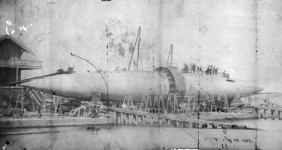 2.
2.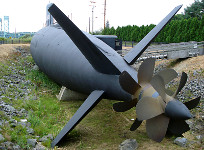 3.
3.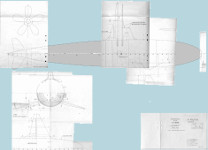
First built in 1858, the Winans’ Cigar Ships featured a wrap-around propeller amidships, similar in some respects to the one proposed for submarines. The Inventor, Ross Winans was from a family of successful railway engineers from Baltimore, Maryland. Good source vernianera.com.
The USS Albacore was a testbed for a number of hydrodynamic experiments. In its final configuration it featured a contra-rotating tandem propeller and X0form rudders. It is now a museum ship.
The Swedish A11 submarine program was heavily influenced by access to the USS Albacore. This early plan shows a submarine without conventional tail surfaces, instead using the propeller for steering. It has large wing-like hydroplanes forward and a rudder on the trailing edge of the sail. The A-11 program explored nuclear propulsion as well but ultimately settled on a conventional boat, albeit with cutting edge X-form control surfaces.
Get The essential guide to World Submarines
This Covert Shores Recognition Guide Covers over 80 classes of submarines including all types currently in service with World Navies.Check it out on Amazon
Cdr. Frederick R. Haselton, US Navy, conceived that a submarine can operate with just two propellers, without the need for rudders or hydroplanes. It can move in almost any direction, including backwards, by subtly directing the thrust from the propellers. The system would not be quite as fast as regular submarines with more conventional propulsion by a couple of knots, but it would be more agile. Haselton also determined that a tandem propeller submarine would be able to operate deeper than regular submarines but would also displace significantly more for the same dimension parameters. Good Reference: Atomic Submarines by Norman Polmar, 1963.
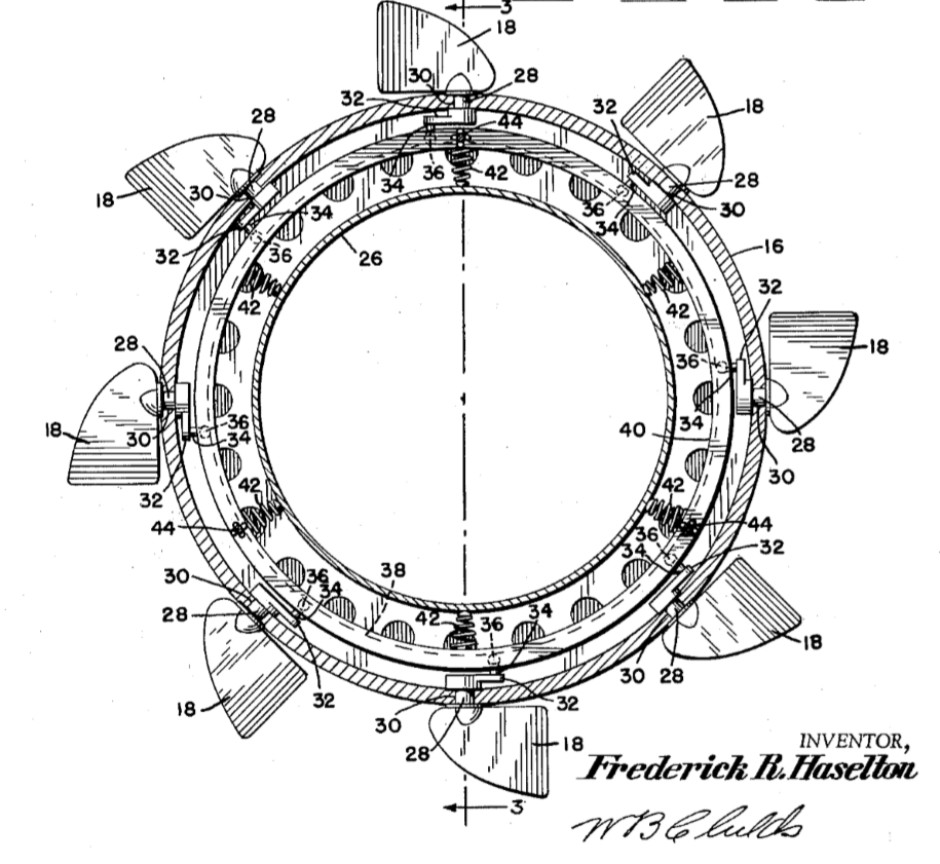
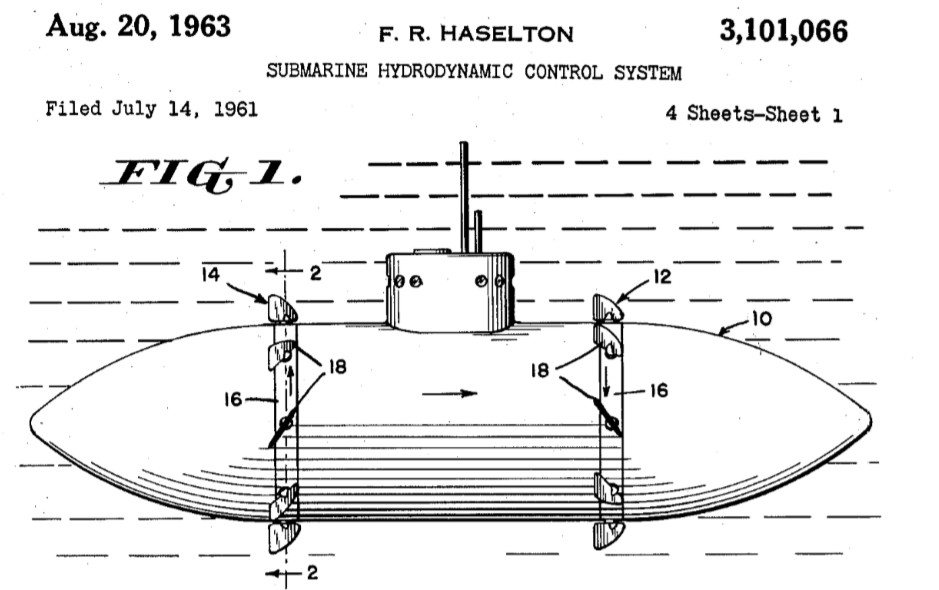
Existing submarines could go down only a relatively short distance into the depths of the oceans partly because of the problems involved with propeller shaft seals. Where a sub’s shaft pierces the pressure hull, seals must be used to keep the high-pressure deep water from forcing its way in around the shaft. The deeper the sub goes the more acute the seal problem becomes. The Haselton design has no seal problems because no shaft pierces the sub’s pressure hull.
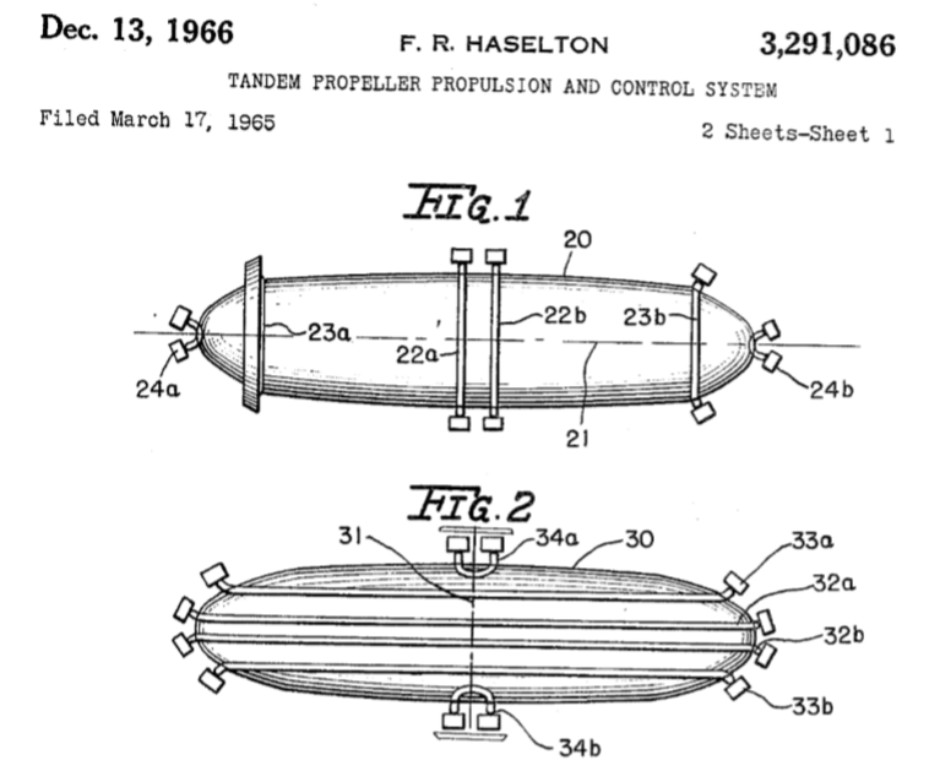

Haselton’s designs had exposed propellers although it was noted that fixed shrouds could be fitted to protect them from ice and damage during docking. It was also suggested that if one propeller malfunctional the other would still propel the boat forward at half speed. The impact of the torque produced in this scenario was not addressed in source literature.
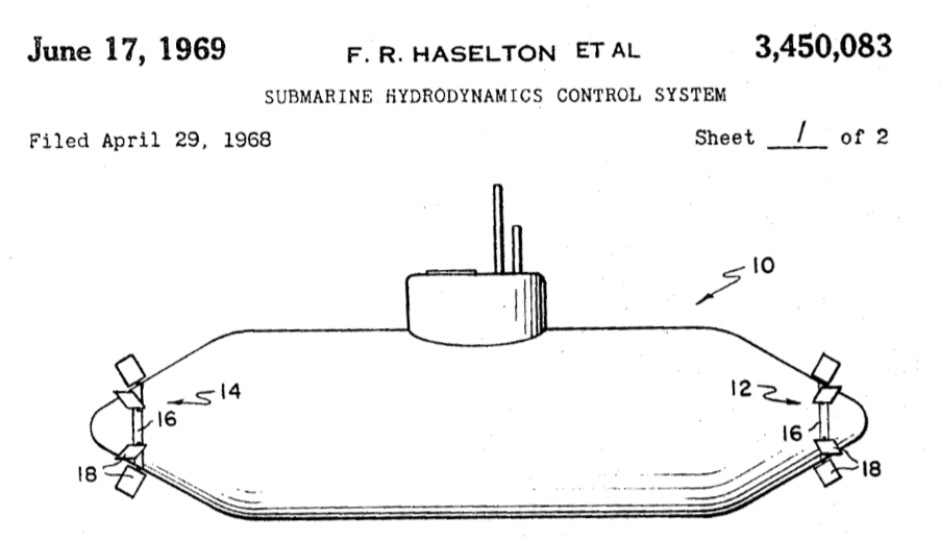
The ultimate book of Special Forces subs Covert Shores 2nd Edition is the ONLY world history of naval Special Forces, their missions and their specialist vehicles. SEALs, SBS, COMSUBIN, Sh-13, Spetsnaz, Kampfschwimmers, Commando Hubert, 4RR and many more.
Check it out on Amazon
More recent developments
Tandem propellers were neve trialed or adopted by any Navy. The research came at a time when the US Navy, via the Royal Navy, was focusing more on stealth which in turn led to slower moving propellers and ultimately pump-jets. These quieter propellers were fixed blade so as to avoid the mechanical sound created by rotating the angle of attack on the blades.
Additionally, it seems probable that the forward propeller would have presented significant operational problems:
a) the noise from the propeller would have impacted sonar performance by causing mechanical noise and flow noise near to the main sonar array and flank arrays
b) The positioning so close to the torpedo tubes would present snagging risks from the command wires of wire-guided torpedoes
c) The blades would present a hazard to crew on deck during entering and leaving port
However, a number of similar ideas have since been put forward, particularly the wrap-around rear propeller.
1.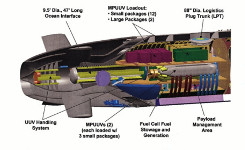 2.
2.
- In the early 2000s a ‘Forward PASS’ (Forward Payloads and Sensors for Submarines consortium), led by Raytheon and supported by Electric Boat, proposed new-generation submarines incorporating an aft-mounted payload bay which exited the submarine through the center of a wrap-around propeller. In this case the propeller itself was buried within the aft hull.
- The South Korean HDS-500 design features an integrated wrap-around pumpjet with a mini wet-dry hangar in the tail.
Related articles (Full index of popular Covert Shores articles)

 Poseidon Intercontinental Nuclear-Powered Nuclear-Armed Autonomous Torpedo
Poseidon Intercontinental Nuclear-Powered Nuclear-Armed Autonomous Torpedo

 Unbuilt US Navy spy submarine
Unbuilt US Navy spy submarine

 Project 705 'ALFA' class attack submarine. w/Cutaway
Project 705 'ALFA' class attack submarine. w/Cutaway

 A-26 Class attack submarine. w/Cutaway
A-26 Class attack submarine. w/Cutaway

 Sturgeon Class SSN. w/Cutaway
Sturgeon Class SSN. w/Cutaway

 Project 673 Advanced Submarine design. w/Cutaway
Project 673 Advanced Submarine design. w/Cutaway

 USS Jimmy Carter (SSN-23) Special Mission submarine
USS Jimmy Carter (SSN-23) Special Mission submarine

 Sweden's nuclear powered submarine project (A-11A)
Sweden's nuclear powered submarine project (A-11A)

 HUSKY Class future attack submarine
HUSKY Class future attack submarine















 World survey of AIP submarines
World survey of AIP submarines

 HDS-500 Midget Submarine
HDS-500 Midget Submarine

 Maritalia GST-23+ Midget Submarine
Maritalia GST-23+ Midget Submarine


